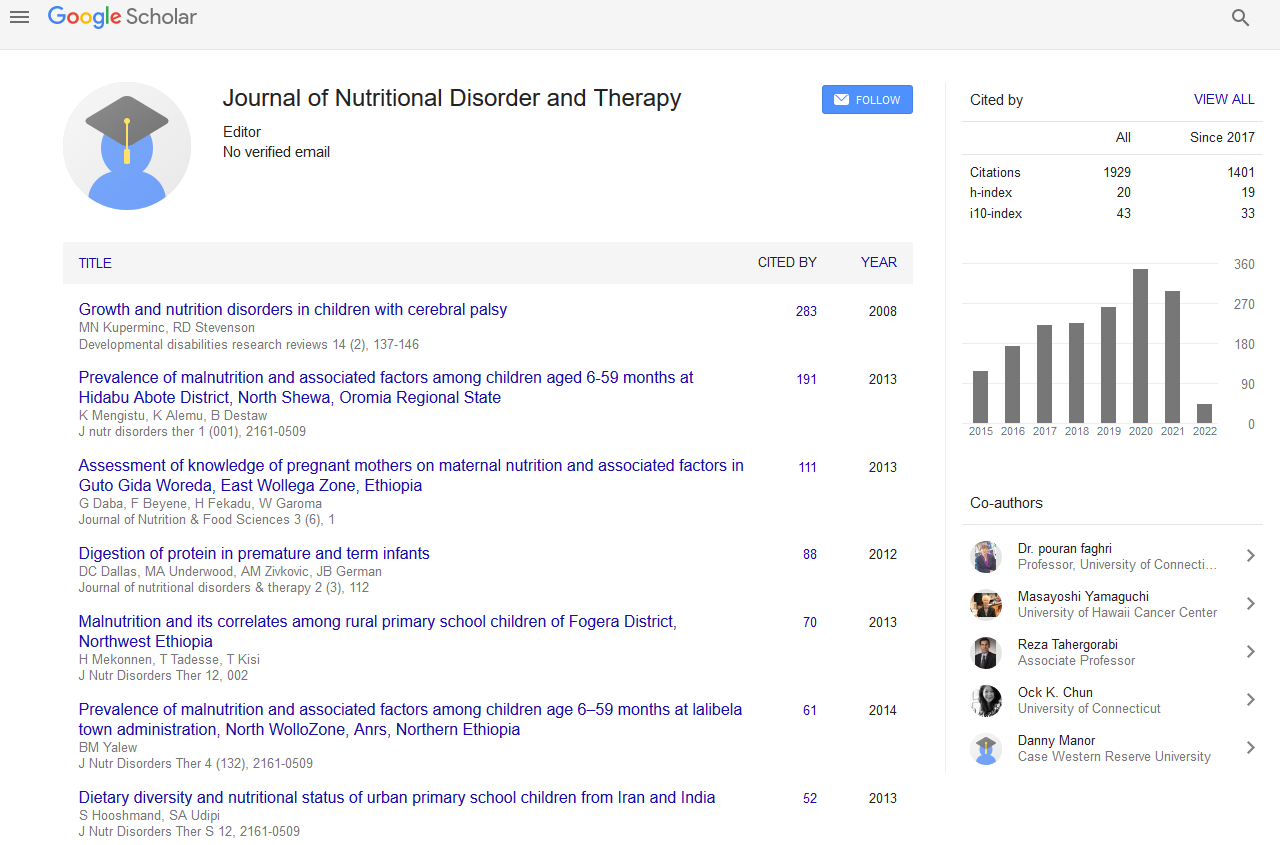Indexed In
- Open J Gate
- Genamics JournalSeek
- Academic Keys
- JournalTOCs
- Ulrich's Periodicals Directory
- RefSeek
- Hamdard University
- EBSCO A-Z
- OCLC- WorldCat
- Publons
- Geneva Foundation for Medical Education and Research
- Euro Pub
Useful Links
Share This Page
Journal Flyer

Open Access Journals
- Agri and Aquaculture
- Biochemistry
- Bioinformatics & Systems Biology
- Business & Management
- Chemistry
- Clinical Sciences
- Engineering
- Food & Nutrition
- General Science
- Genetics & Molecular Biology
- Immunology & Microbiology
- Medical Sciences
- Neuroscience & Psychology
- Nursing & Health Care
- Pharmaceutical Sciences
Abstract
When Should Pediatricians Become Concerned About Childhood Obesity?
Teodoro Durá-Travé and Fidel Gallinas-Victoriano
Objective: To analyze the chronological evolution of excess body weight (overweight and obesity) in order to raise public awareness within the different areas of intervention (family, school, business environment, health services) with the aim to take effective actions.
Material and methods: Weight, height and body mass index (BMI) of 604 healthy subjects (307 males and 297 females) have been recorded at birth and at the age of 1, 2, 3, 4, 6, 8, 10, 12 and 14 years. The excess body weight has been calculated according to national references.
Results: Prevalence of excess body weight at age 14 years was significantly higher (p<0.05) in males (29%) than in females (12.8%). BMI (kg/m2) was significantly higher (p<0.05) for both sexes in every period of age, except for birth and age 1 year, in those patients with excess body weight at age 14 with respect to patients with normal nutritional status of the same age. Those groups with excess body weight at age 14 showed BMI (Z-score) reaching overweight or obesity levels at age 4, and progressively increasing.
Conclusions: Excess body weight would start at early stages in life, when dietary habits of the children depend almost exclusively on family habits, and would be aggravated during school attendance. Finally, a disproportionate weight increase occurs in adolescence probably related to unhealthy dietary habits and lifestyle.


